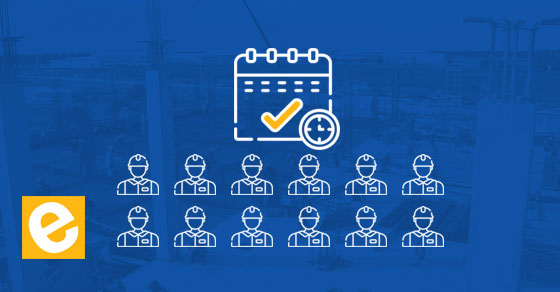
How To Transition to A Time Card App for Multiple Employees
Implementing new technology in a business can be hard. There are many detractors from cost to current processes that must be overcome to look at technology. And implementing it is its uphill battle. Transitioning to a time card app for multiple employees is work, but is extremely rewarding.

Table of Contents
Why Businesses Are Slow to Adopt Technology
The construction industry is notoriously slow to adopt new technology, but they aren’t the only ones. Most businesses recognize the importance of keeping up with the time; however, few implement the technologies they identify as important within their industry. Every year though, more reports show that technological adoption improves business efficiency. Many companies cite a reluctance to change and intimidation at the range of products as reasons why they don’t adopt. However, there are a vast number of reasons why companies are slow to adopt technology and the reasons why that’s not as efficient.
Risk and Reward
One of the bigger reasons why businesses are slow to adopt technology is because of the risk associated with it. The reason is companies watch as tech companies come in promising the solution to certain problems, then don’t deliver on the promises. However, this hinders companies from switching to technologies that have proven themselves. Often believing that the cost to adoption will decrease, or that waiting a couple of years will solidify the companies even more. However, that means that businesses wait too long to adopt a technology or implement a technology causing more work on the back end.
Integration Concerns
Integration concerns are another reason why businesses don’t adopt the technology. Sometimes companies are concerned with whether a new technology will integrate with the technologies they already use. This is a valid concern because duplicate data entry can cause errors that cost businesses thousands of dollars.
Disruptiveness
Another big reason why businesses don’t adopt technology is they claim it is too disruptive to their overall structure. The belief is that the old way of doing things works, and the new technology could utilize completely different workflows. However, the longer companies wait to implement a new technology the more disruptive implementing it becomes.

How to Transition to a Time Card App for Multiple Employees
Once these initial hesitations have been assuaged, the hard part of transitioning from a paper time system to a time card app for multiple employees begins. Construction companies must invest time in ensuring the success of the project. If companies don’t invest the right time and people into getting the solution off the ground, it will fail. If the implementation fails, it will make it harder for the company to improve or invest in other technologies for other areas. While this pressure is intimidating, there are proven methods for implementation and adoption to enhance your transition to a time card app for multiple employees.
Define Objectives and Goals
When implementing a time card app for multiple employees, it’s important to determine what would make the implementation successful. Without a clearly defined goal and success, the implementation team won’t know what success is or how to achieve it. All goals should be SMART: specific, measurable, ambitious, reachable, and time-bound. For time card app implementation, it would probably be having the full team consistently using the app for a project within a month of implementation starts. Regardless, defined objectives and goals are a must for implementing a time card app for multiple employees.
The Power Team
Any successful implementation of a time card app for multiple employees or other technology requires a power team. A power team must have a sponsor, champion, project manager, and integrator. The sponsor is a high-level or authoritative person who is driving the implementation process financially. The champion is an average employee who is acting as a cheerleader, diplomat, and problem solver for the implementation process. They encourage their coworkers to use the system and help solve problems that arise. The project manager is often also the integrator. The project manager oversees the administrative work with implementation while the integrator works through workflows and other processes to best integrate the solution. These roles are crucial to implementing any software successfully.
Start with a Pilot Project and Team
One of the best solutions to successfully implementing a new solution is to start with a pilot team on a project. By starting with one team, the implementation manager has a chance to see where issues arise and how to fix them. It also creates a team of experienced users to help combat issues that may arise.
Cost of Implementing, or Not
According to the Harvard Business Review, one of the easiest ways to get people to use new technology is to raise the professional stakes. Telling employees that all time cards must be submitted through the app is one way to raise the stakes and ensure better implementation. Another way to increase implementation is to offer rewards to teams that correctly use the solution.
Feedback Channels
It’s incredibly important to offer feedback channels when implementing a time card app for multiple employees. It gives the implementation manager a way of improving or making changes where needed since they know the issues. It also makes employees feel like their feedback is valid.